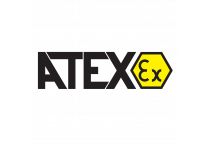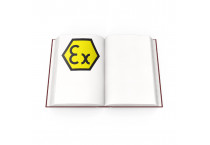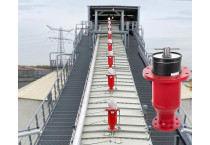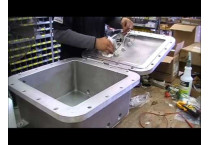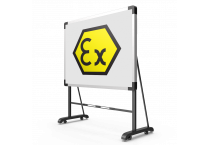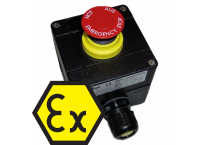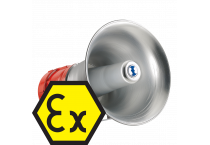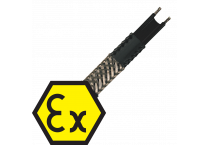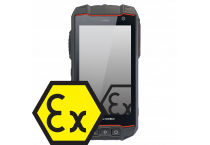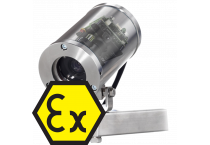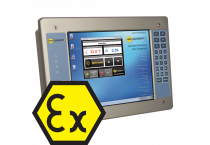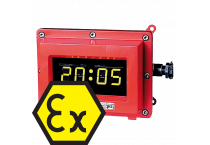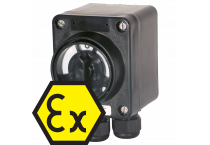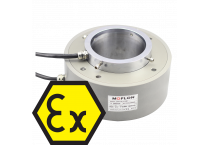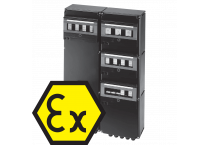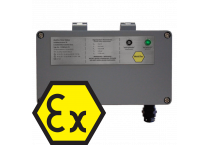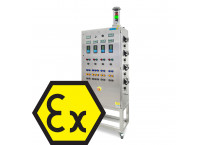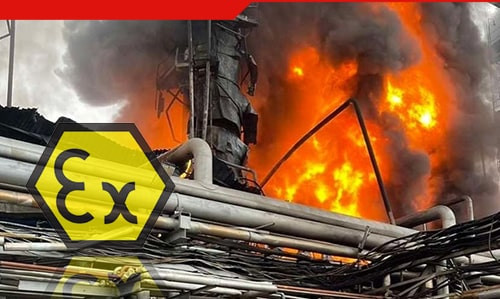Морате бити пријављени да
-
- EX tasteri od nerđajućeg čelika
- Ручни јављачи пожара (РЈП)
- Разводна кутија Цримпед-ЛКС
- Оператор панели ЛКС
- жлезде Ек
- Контролне кутије ЛКС
- ЛКС празан кућиште
- ex Ормарићи
- Кућиште панели, касета Фламепрооф ЕКС д
- водоводне арматуре
- чауре ЛКС
- Бок / кутије ЕКС пребацивање увијеним полиестера за брзу испоруку
- Взривобезопасное цевовод / кабл изолатори М ... к
- Заштитно кућиште АКПиА
Uređaji i komponente za zone opasnosti od eksplozije EX
Sve vrste opreme i komponenti, uključujući sisteme, module i elektronske uređaje korišćene u oblastima označenim kao zone opasnosti od eksplozije, moraju ispunjavati zahteve Evropske direktive 2014/34/EU (ATEX 114). Usklađenost se potvrđuje sertifikatima koji pokazuju u kojim zonama se mogu bezbedno koristiti bez rizika od paljenja zapaljivih gasova, para, magle ili prašine.
Šta su zone opasnosti od eksplozije?
EX zona je prostor u kojem postoji potencijalno eksplozivna atmosfera. Drugim rečima, postoji rizik od formiranja mešavine vazduha ili drugog oksidatora sa zapaljivim supstancama u koncentraciji dovoljnoj za paljenje. U slučaju slučajnog paljenja, atmosfera brzo gori, izazivajući eksploziju sa povećanjem pritiska od najmanje 5 kPa.
Zone opasnosti od eksplozije se definišu na mestima gde postoje zapaljivi gasovi, tečnosti i njihovi gasovi, magla ili prašina. U zavisnosti od opasnog faktora, prema ATEX direktivi, one se dele na 6 različitih tipova.
Da li su sve EX zone podjednako opasne?
Nisu sve EX zone podjednako sklone nekontrolisanim eksplozijama kada se pojavi izvor paljenja, kao što je električna, elektrostaticka, mehanička varnica ili iznenadni izlazak vrućeg vazduha. Zbog toga se oblasti sa gasovima ili tečnostima klasifikuju od 0 do 2.
Zona opasnosti od eksplozije 0 se smatra najopasnijom. To je prostor, obično unutar cevovoda, rezervoara i kontejnera, gde eksplozivna atmosfera postoji stalno ili duži vremenski period.
Zona opasnosti od eksplozije 1 je oblast u kojoj je rizik od formiranja eksplozivne atmosfere u normalnim uslovima rada retka ili povremena.
Zona opasnosti od eksplozije 2 ima najmanji rizik, jer se eksplozivna atmosfera ne pojavljuje u normalnim uslovima, a ako se pojavi, to je samo na kratko.
Pored toga, zone opasnosti od eksplozije se klasifikuju i za prašinu, prahove i vlakna. U ovom slučaju dele se na zone 20, 21 i 22, gde vreme i okolnosti pojave eksplozivne atmosfere odgovaraju zonama 0, 1 i 2 za gasove i tečnosti.
Zaštita od eksplozije i EX zone
Svaka EX zona mora biti opremljena samo pravilno odabranim uređajima u skladu sa važećim propisima. Oni moraju biti dizajnirani u skladu sa ATEX standardima, koji zahtevaju korišćenje različitih zaštitnih rešenja kako bi se sprečilo paljenje eksplozivne atmosfere. Rešenja uključuju specijalne Ex-d kućišta otporna na unutrašnje eksplozije koja sprečavaju njihovo širenje napolje. Opremljena su plamenim odvodiocima i debelim zidovima koji obezbeđuju otpornost na pritisak nastao tokom eksplozije.
Pored toga, uređaji namenjeni za zone opasnosti od eksplozije koriste i iskrone sigurnosne zaštite (Ex i) koje pokrivaju električne krugove i koje čak i u slučaju kratkog spoja ili oštećenja ne generišu dovoljno energije za paljenje. Njihov nivo zaštite je podeljen u tri podkategorije — ia, ib, ic. Prva pruža najviši nivo zaštite i namenjena je zoni 0, dok ic pruža najniži nivo i odgovara zoni 2. Ovo omogućava projektantima da biraju uređaje u skladu sa nivoom rizika i specifičnostima industrijske oblasti.
DACPOL nudi širok izbor komponenti i uređaja za EX zone koji ispunjavaju ATEX standarde i međunarodne standarde poput IECEx. Među njima su osvetljavajući elementi, razvodne table, kablovi, uređaji za uzemljenje, rezervni izvori napajanja, AC/DC napajanja, ventilatori, grejači, svetlosne i zvučne signalizacije. Svi ovi proizvodi su dizajnirani da izdrže teške radne uslove i minimiziraju rizik od nekontrolisanih eksplozija.
Odabir odgovarajućih uređaja ne samo da omogućava opremanje zona opasnosti od eksplozije u skladu sa propisima, već i osigurava bezbednost zaposlenih i industrijskih procesa. Pravilno odabrane komponente omogućavaju kontinuirani rad postrojenja i smanjuju rizik od zastoja i kvarova. DACPOL pruža podršku klijentima pri odabiru uređaja za svaku EX zonu, nudeći tehničke konsultacije i podršku u vezi sa usklađenošću sa standardima. Ovo osigurava bezbednost zona opasnosti od eksplozije i kontinuiran i pouzdan rad industrijskih procesa.





